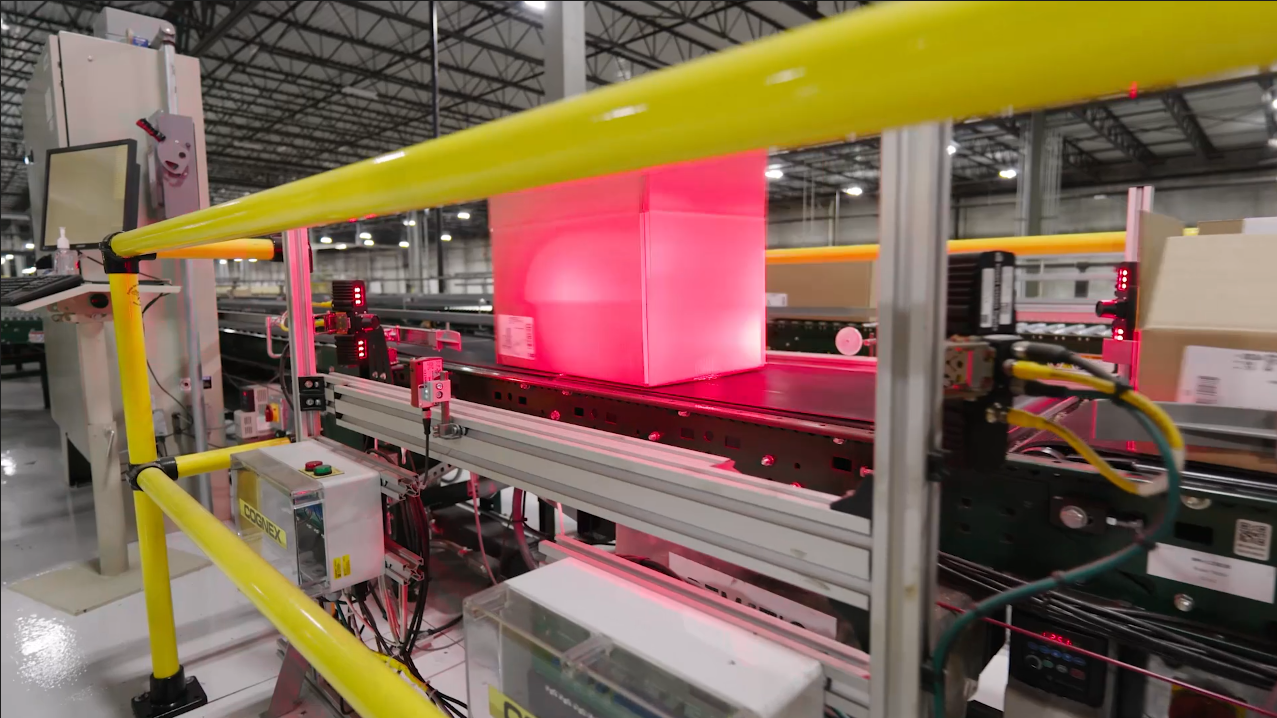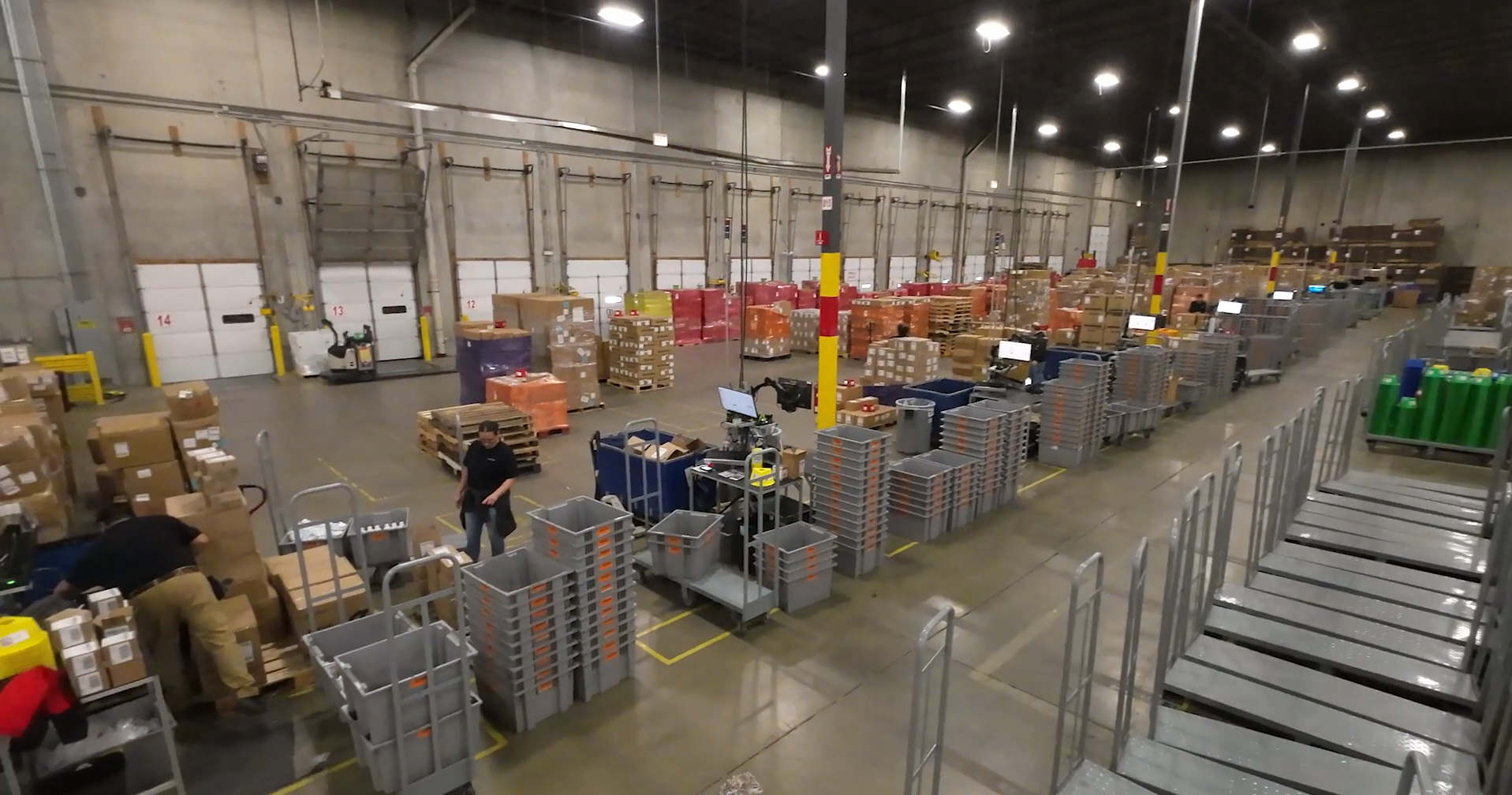For Amazon sellers considering Seller-Fulfilled Prime (SFP), one of the most strategic decisions is determining which products in your catalog are ideal candidates for this fulfillment method. Recent research from Bain & Company confirms that SFP isn’t a one-size-fits-all solution. It’s most advantageous for specific product types that face disproportionate costs or challenges in the Fulfillment by Amazon (FBA) model.
In this comprehensive guide, we’ll provide a strategic framework for identifying your ideal SFP SKUs, based on Bain’s research and real-world experience with enterprise Amazon sellers.
The Strategic Approach to SFP Product Selection
Bain’s research identifies SFP as a $3-5 billion market opportunity, but success requires a targeted approach. Rather than shifting your entire catalog to SFP, the optimal strategy for most sellers is a hybrid model that leverages both FBA and SFP for different segments of your product catalog.
This hybrid approach allows you to:
– Maintain the Prime badge across your entire catalog
– Optimize profitability for each product type
– Balance operational complexity with economic benefit
– Scale your SFP program strategically over time
Six Product Characteristics That Make SFP the Optimal Choice
Bain’s research identifies specific product characteristics that make items particularly well-suited for SFP. Let’s examine each in detail:
1. High-Value or Fragile Items
Why SFP Works Better:
– Easier to absorb potentially higher shipping costs associated with SFP
– Fewer touch points in the supply chain reduces damage risk
– Greater control over specialized packaging requirements
– Higher margins can accommodate premium fulfillment costs
Examples:
– Premium electronics ($300+)
– Luxury home goods
– Collectibles and limited editions
– Artisanal or handcrafted products
Economic Impact: For high-value items, the FBA percentage-based referral fee often outweighs the potentially higher shipping costs of SFP. For a $500 item with a 15% referral fee, the $75 referral fee alone often exceeds the entire fulfillment cost difference between FBA and SFP.
- Warehouse management systems,
- Inventory tracking,
- Order processing,
- Carrier integration, and
- Real-time reporting.
2. Slow-Moving Goods
Why SFP Works Better:
– Avoids FBA monthly storage fees for items with low sales velocity
– Reduces long-term storage fees for inventory over 6 months
– Helps prevent inventory age-outs and disposal fees
– Allows for deeper catalog without inventory restrictions
Examples:
– Specialized parts and components
– Niche product variations
– Seasonal items during off-peak periods
– Legacy or replacement products
Economic Impact: For items that sell fewer than 2-3 units per month, FBA storage fees can quickly erode margins. A product that sits in FBA for 7+ months incurs both monthly and long-term storage fees, often exceeding 15-20% of the item’s value.
3. Large, Heavy, or Bulky Items
Why SFP Works Better:
– Avoids FBA steep dimensional weight pricing
– Helps eliminate oversized item surcharges
– Reduces inbound shipping costs to multiple FBA centers
– Allows for more efficient packaging specific to the product
Examples:
– Furniture and home décor
– Garden and outdoor equipment
– Large electronics and appliances
– Sporting goods and exercise equipment
Economic Impact: For oversized items, FBA fees can be 2-3x higher than equivalent SFP fulfillment costs. A patio furniture set that costs $38.75 in FBA fulfillment fees might cost only $12.50 in 3PL fulfillment through SFP, plus shipping.
4. Products Requiring Special Handling or Preparation
Why SFP Works Better:
– Allows for specialized handling procedures
– Enables custom packaging solutions
– Provides greater quality control throughout fulfillment
– Accommodates products with specific temperature or storage requirements
Examples:
– Products with multiple components
– Items requiring assembly verification
– Products with special packaging requirements
– Goods with specific storage needs
Economic Impact: Special handling requirements often incur additional fees in the FBA model, while SFP allows for these procedures to be integrated into standard fulfillment processes at lower cost.
5. Products with Unpredictable or Seasonal Demand
Why SFP Works Better:
– Avoids inventory limitations during peak seasons
– Helps eliminate the need for precise inventory forecasting
– Provides flexibility to scale up or down quickly
– Helps reduce risk of stockouts or excess inventory
Examples:
– Holiday-specific merchandise
– Weather-dependent products
– Trend-driven items
– Products with volatile demand patterns
Economic Impact: For seasonal products, FBA often requires inventory pre-positioning months in advance, leading to extended storage fees. SFP allows for just-in-time inventory management, reducing carrying costs by 20-30% for highly seasonal items.
6. Items with Variations
Why SFP Works Better:
– More cost-effective management of extensive product variations
– Avoids maintaining separate FBA inventory for each variation
– Heps reduce risk of slow-moving variations incurring storage fees
– Allows for broader catalog depth without inventory restrictions
Examples:
– Apparel with multiple sizes and colors
– Products with different finishes or styles
– Configurable items with multiple options
– Collections with numerous related SKUs
Economic Impact: For products with many variations, SFP can reduce overall inventory carrying costs by 15-25% compared to maintaining separate FBA inventory for each variation.
Category-Specific SFP Opportunities
Bain’s research identifies specific product categories with varying degrees of SFP fit. Let’s examine the opportunities in each:
High SFP Fit Categories
Patio, Lawn & Garden
– Typically large, bulky items with seasonal demand
– Often heavy with high dimensional weight
– Frequently subject to FBA inventory restrictions during peak season
– SFP Advantage: 15-25% cost savings on average
Appliances
– Heavy items with high shipping costs
– Often require special handling
– Relatively slow inventory turns
– SFP Advantage: 10-20% cost savings on average
Musical Instruments
– High-value, fragile items
– Often large or oddly shaped
– Specialized handling requirements
– SFP Advantage: 5-15% cost savings on average
Medium-High SFP Fit Categories
Electronics
– High-value items with high referral fees
– Mix of fast and slow-moving inventory
– Often requires specialized handling
– SFP Advantage: 0-10% cost savings, depending on specific product
Tools & Home Improvement
– Often heavy or bulky
– Many slow-moving specialized items
– Diverse product dimensions
– SFP Advantage: 5-15% cost savings on average
Industrial & Scientific
– Specialized items with low sales velocity
– Often high-value with high referral fees
– Frequently oversized or heavy
– SFP Advantage: 10-20% cost savings on average
The SFP Product Selection Framework: A Step-by-Step Approach
To systematically identify your ideal SFP candidates, follow this comprehensive framework:
Step 1: Catalog Segmentation Analysis
Begin by segmenting your entire product catalog based on key characteristics:
| Size and Weight Tiers | Value Segments | Sales Velocity | Special Characteristics |
| – Standard-size items – Oversized items (by FBA definition) – Heavy items (10+ lbs) – Bulky items (large dimensional weight) | – Low-value (<$25) – Mid-value ($25-$100) – High-value ($100-$300) – Premium ($300+) | – Fast-moving (10+ units/month) – Medium velocity (3-10 units/month) – Slow-moving (1-2 units/month) – Very slow (<1 unit/month) | – Fragile items – Products with variations – Seasonal products – Items requiring special handling |
Step 2: FBA Cost Analysis
For each segment, calculate the total FBA cost structure:
| Direct FBA Costs | Indirect FBA Costs |
| – Referral fee (% of sale price) – FBA fulfillment fee (based on size/weight tier) – Monthly storage costs (volume × storage rate) – Estimated long-term storage fees – Inbound shipping to Amazon – Return processing fees | – Inventory restrictions impact – Stockout risk during peak periods – Multi-channel fulfillment limitations – Brand experience constraints |
Step 3: SFP Cost Projection
For each segment, project the total SFP cost structure:
| Direct SFP Costs | Indirect SFP Benefits |
| – Referral fee (same as FBA) – 3PL fulfillment costs (pick, pack, ship) – 3PL storage costs – Shipping costs (to meet Prime delivery requirements) – Return processing costs | – Inventory control advantages – Multi-channel synergies – Brand experience enhancements – Operational flexibility |
Step 4: Profitability Comparison
Compare the total cost structure and identify segments where SFP provides a clear economic advantage:
| Primary SFP Candidates | Secondary SFP Candidates | Remain with FBA |
| – High-value, oversized items – Slow-moving, bulky products – Seasonal items with variable demand – Products with many variations | – Mid-value items with special handling needs – Medium-velocity products in SFP-friendly categories – Items with multi-channel sales potential | – Fast-moving, standard-size items – Low-value products with high shipping cost sensitivity – Items without special handling requirements |
Step 5: Operational Feasibility Assessment
Evaluate the operational implications of your proposed SFP selection:
| Volume Analysis | Handling Requirements | Integration Considerations |
| – Total order volume for SFP candidates – Daily order patterns and peaks – Geographic distribution of orders | – Special packaging needs – Product preparation procedures – Quality control processes | – Inventory management across channels – Order routing logic – Returns processing workflow |
Step 6: Phased Implementation Planning
Develop a strategic rollout plan for your SFP program:
| Phase 1: Pilot Program | Phase 2: Category Expansion | Phase 3: Full Implementation |
| – Select 5-10 high-confidence SFP candidates – Establish baseline metrics for comparison – Implement and monitor for 30-60 days | – Add additional products from successful categories – Refine processes based on pilot learnings – Scale operations while maintaining performance metrics | – Expand to all identified SFP candidates – Optimize inventory placement and fulfillment rules – Continuously evaluate and adjust product selection |
Real-World Examples: SFP Product Selection in Action
Let’s examine how this framework applies to real products across different categories:
Example 1: Home & Garden Category
Product: Patio Furniture Set
| Specs | Analysis | ||
| – Sale price: $499.99 – Dimensions: 48″ × 36″ × 24″ – Weight: 65 lbs – Monthly sales: 50 units – Return rate: 2% | – Oversized item with high dimensional weight – High value with significant referral fee – Moderate sales velocity – Seasonal demand pattern | ||
| Decision: Ideal SFP Candidate | |||
| FBA costs: $136.63 per unit | SFP costs: $120.50 per unit | Net advantage: $16.13 per unit (11.8% savings) | Annual impact: $9,678 increased profit |
Example 2: Electronics Category
Product: Wireless Earbuds
| Specs | Analysis | ||
| – Sale price: $79.99 – Dimensions: 4″ × 4″ × 2″ – Weight: 0.5 lbs – Monthly sales: 300 units – Return rate: 4% | – Standard-size item with low dimensional weight – Mid-value with moderate referral fee – High sales velocity – Consistent demand pattern | ||
| Decision: Remain with FBA | |||
| FBA costs: $9.85 per unit | SFP costs: $12.40 per unit | Net advantage: -$2.55 per unit (25.9% more expensive) | Annual impact: $9,180 potential loss if moved to SFP |
Example 3: Industrial & Scientific Category
Product: Specialized Testing Equipment
| Specs | Analysis | ||
| – Sale price: $349.99 – Dimensions: 18″ × 12″ × 10″ – Weight: 15 lbs – Monthly sales: 8 units – Return rate: 1% | – Standard-size but heavy item – High value with significant referral fee – Low sales velocity – Specialized handling requirements | ||
| Decision: Strong SFP Candidate | |||
| FBA costs: $42.75 per unit | SFP costs: $35.20 per unit | Net advantage: $7.55 per unit (17.7% savings) | Annual impact: $724.80 increased profit |
VEYER’s Approach to SFP Product Selection
At VEYER, we understand that strategic product selection is the foundation of SFP success. Our approach includes:
1. Comprehensive SKU Analysis
Our data science team conducts a thorough analysis of your entire product catalog to identify ideal SFP candidates based on:
– Historical sales data and patterns
– Product dimensions and characteristics
– Current fulfillment costs and performance
– Category-specific benchmarks and best practices
2. Category-Specific Expertise
Our specialized knowledge of high and medium-fit SFP categories allows us to:
– Apply proven strategies for similar products
– Implement category-specific handling procedures
– Optimize packaging for different product types
– Leverage best practices from our extensive experience
3. Phased Implementation Support
We help you roll out your SFP program strategically:
– Starting with high-confidence product segments
– Gradually expanding to additional categories
– Continuously optimizing based on performance data
– Scaling while maintaining strict SFP compliance
4. Ongoing Optimization
Our approach doesn’t end with initial selection, we continuously:
– Monitor performance metrics by product segment
– Identify additional SFP opportunities
– Recommend adjustments based on changing conditions
– Optimize inventory placement and fulfillment rules
Conclusion: Strategic Product Selection as the Foundation of SFP Success
The SFP product selection framework provides a systematic approach to identifying which items in your catalog will benefit most from Seller-Fulfilled Prime. By focusing on products with characteristics that create disproportionate costs in the FBA model—high-value, oversized, slow-moving, or requiring special handling—you can maximize the economic advantage of SFP while maintaining the important Prime badge.
Remember that SFP isn’t an all-or-nothing proposition. The most successful Amazon sellers employ a hybrid approach, using FBA where it makes economic sense and SFP where it delivers superior margins. This strategic approach allows you to optimize profitability across your entire catalog while providing the Prime experience customers expect.
By applying this framework and partnering with an experienced SFP fulfillment provider like VEYER, you can transform your Amazon fulfillment strategy from a cost center into a competitive advantage.
Want to identify which products in your catalog are ideal for SFP? Contact VEYER today for a free SKU-level analysis and discover how our nationwide network and weekend operations can help you maximize your Amazon profitability.




